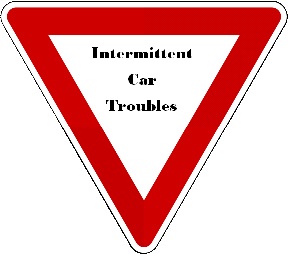Posted on 4/16/2013

Your risk factor has to do with how you repair and maintain your vehicle. I had a husband and wife come into the shop last week with a check engine light on. Our shop scanned the control unit in their SUV and found 2 different items that the code scanner read. We also found a bad battery, it was over due for an oil change by 5,000 miles, and was well over due for a major service. It was the wife’s SUV but the husband was to make all the calls on the needed repair on this vehicle. His first comment was “it didn’t need a battery” but I did explain that it is a very scientific approach in checking a battery condition and it flunked the test very badly. It was the only time that the wife said anything about the vehicle, that it was starting very slowly. As conversation about this vehicle proceeded, it became very apparent that the husband was a risk taker. He didn’t want to make this a dependable vehicle for his wife to drive. “She has a cell phone and towing insurance” so she is covere ... read more
Posted on 1/21/2013

As a long-term automotive shop owner- since 1975- I work at giving my customers the proper guidance to extend the longevity of their vehicle without over spending. I have worked diligently on that balance. As part of walking that line, I often need to clarify misconceptions customers have about vehicle maintenance. Here are some of the common myths I encounter and what I tell my customers: Myth: Modern vehicles require routine tune-ups. In fact, the phrase “Tune Up” does not apply to newer vehicles. The last time most cars could truly be “tuned up” was in the 1970’s. Tuning a car was like conducting an orchestra, making sure all the cylinders are firing correctly, at the correct time, with the proper air fuel mixture, to maximize power, drivability and fuel economy. On vehicles built after the 1990′s, none of this is adjustable. The closest thing to tuning up today is getting a check engine light to turn off by troubleshooting and replacing of components. Myth: You nee ... read more
Posted on 3/6/2012

The biggest challenge in the auto repair and service department is the check-engine light (which often reads “service engine soon”). Most folks think you simply hook up a scanner and it will tell you what is wrong with the vehicle. Actually, it won’t. It will, however, tell you where to start looking. One great example of this is a Jeep we worked on in our shop. It was giving us fault codes for a device called the oxygen sensor, which acts as a “final check” to see if your vehicle’s exhaust is really clean. Oxygen sensors even measure the pre-catalyst and post-catalyst exhaust to see if the catalytic convertor is doing its job. Many problems will cause an oxygen sensor fault code even when the sensor is doing its job. In this particular Jeep, an exhaust leak allowed extra oxygen to enter the exhaust gases, which triggered the check-engine light. Believe me, these are very complicated systems. The check-engine light, part of a system called OBD2 (onboard diagnostics, second generation) ... read more
Posted on 12/21/2011

One of the daily challenges that we face at our shops is diagnosing and fixing automotive problems that arise only intermittently. Drivers come to us all the time asking us to fix vibrations, noises and poor-running or no-start conditions that happen sometimes, for unknown reasons. The first is to observe and experience the symptoms of the problem. Step two is establishing a theory about the root causes of the problem. Moving to step three, you test, review and diagnose to prove or disprove your theory. The fourth and most important step is applying a remedy — in the case of auto service, repairing or replacing the parts in question — to make sure your theory is correct. If the problem does not exist all the time, however, you lose control over two or three of these steps.We have had vehicles that will crank over but won’t start. One of the first steps in this case is to read the onboard ECU (electronic control unit) to see if any fault codes have registered. If they have, we cons ... read more